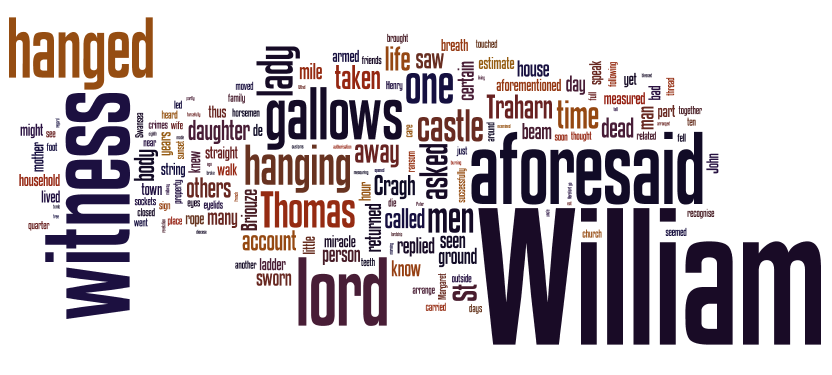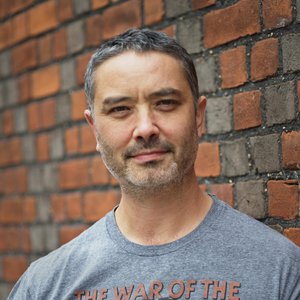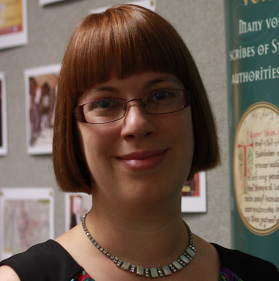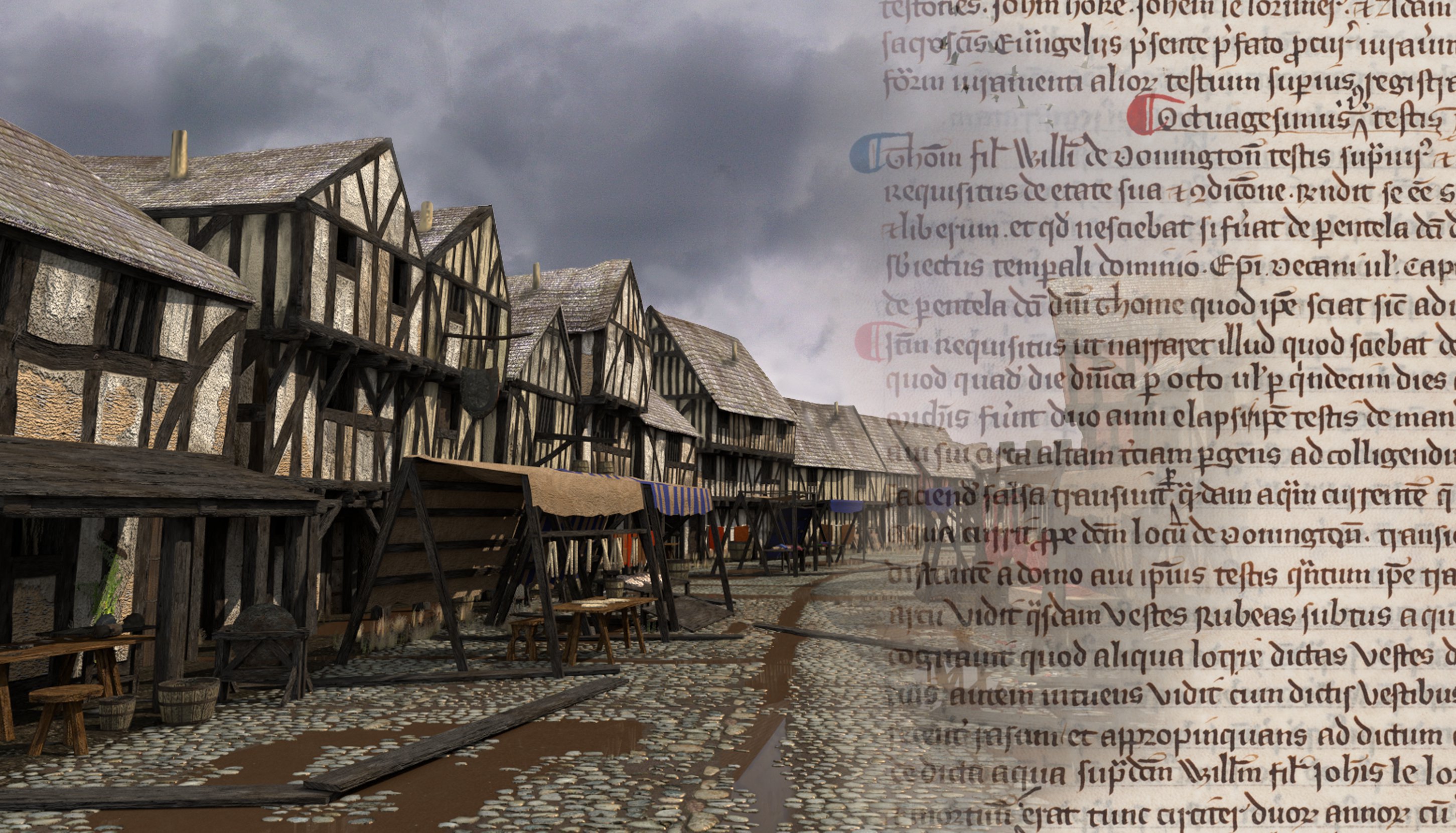William Cragh was hanged in Swansea in 1287. Twice. Was he spared by divine intervention or simple ineptitude? Employing techniques of text encoding, 3D visualisation, GIS and archaeology, the project seeks to unravel the strands of the story and shine a light on medieval society.
Background
Lead by Catherine Clarke in Southampton, the City Witness project offered a rare opportunity to compare contemporary testimonies from all levels of society, regarding a single mysterious event in the city of Swansea that occurred around 700 years ago. Though the project focuses on the witness accounts of the hanging of William Cragh it also allowed us to look at the medieval city through the lens of this event; its people, its buildings and its institutions.
In late 2020, this project was successfully converted to a static site without any significant loss of functionality.

Witness word cloud
The multi-media tours KDL helped us build for Chester and Swansea opened up innovative possibilities for engaging people with the history of their environment, out on the city streets.Professor Catherine Clarke
University of Southampton
The methods employed in City Witness are innovative in several ways, which is in part due to the variety of sources combined to create a rich and evocative picture of a medieval town.
The witness statements were marked up to identify the people, the places and events that made up the story of "Twice Hanged William Cragh". The statements are displayed on the website with Latin and English versions shown in parallel.
Fundamentally, the team at King’s Digital Lab helped us to understand what was possible through new and bespoke digital tools and methods.Professor Catherine Clarke
University of Southampton
Simultaneously, a team in Queen's University Belfast were using a technique they dubbed "reverse plan" analysis to use the earliest available cartographically accurate maps to identify the medieval town, and pinpoint the places talked about in the witness statements. Thanks to this joint endeavour, a user of the website can follow the individuals through the town and through the story, using the map to contextualise the events and see the historic landscape through contemporary eyes.
A fly through of the medieval city of Swansea
How we worked
-
Enabling
We refined a simple and elegant markup tool for the investigators and developed a methodology for characterising narrative that was applied to the witness statements.
-
Innovating
KDL pushed into new territory, combining visualisations and mapping with textual analysis and drawing on expertise from across the department.
-
Engaging
We were using digital terrain data and 3D tools to bring the story to life. The project also incorporated a game, aimed at the younger audience which encouraged school children to engage with their local and regional history.
-
Delivering
The final project website was refined over multiple iterations as we worked closely with the research team to bring all the elements together in a coherent whole.
Working with King’s Digital Lab has been stimulating and fun. It has taken our research in new directions and opened up tremendous impact opportunities.Professor Catherine Clarke
University of Southampton
The Team
-

Neil Jakeman
Lead Developer
City Witness was a great project to work on, with a team that we already had a great relationship with from past collaborations in Chester. The map work represented a continuation of the refinement of the processes we had developed, and focused on capturing the imagination of the public.
-

Professor Catherine Clarke
Project Lead
Between 2008 and 2014 I led three major AHRC-funded projects in which the team at King’s Digital Lab played a major research and development role. The three projects, ‘Mapping Medieval Chester’,‘Discover Medieval Chester’ and ‘City Witness: Place and Perspective in Medieval Swansea’. All brought together digital mapping with textual editing and analysis, as well as public-facing heritage interpretation resources for wide audiences.
Fundamentally, the team at King’s Digital Lab helped us to understand what was possible through new and bespoke digital tools and methods. The tools they developed for linking an interactive atlas and critical editions of medieval texts, for example, helped us to investigate medieval representations and perceptions of place in new ways. The multi-media tours they helped us build for Chester and Swansea opened up innovative possibilities for engaging people with the history of their environment, out on the city streets.
These projects have all received wide recognition and have won a number of awards. For example, the Chester materials formed part of a 4* Impact Case Study for REF 2014. ‘City Witness’ won a silver medal for Public Engagement in the 2014 international Digital Humanities Awards, and was shortlisted for a prize by the UK National Co-ordinating Centre for Public Engagement. All the projects have featured in various AHRC Impact reports for UK government.
Working with King’s Digital Lab has been stimulating and fun. It has taken our research in new directions and opened up tremendous impact opportunities.






